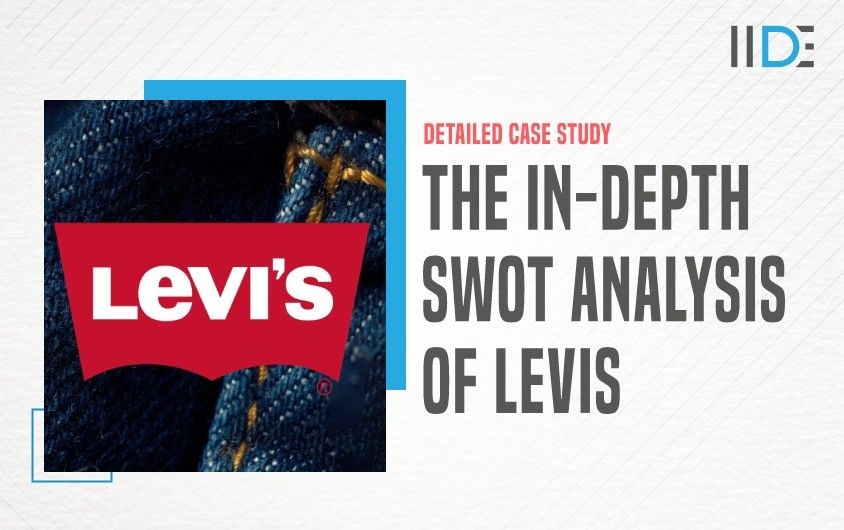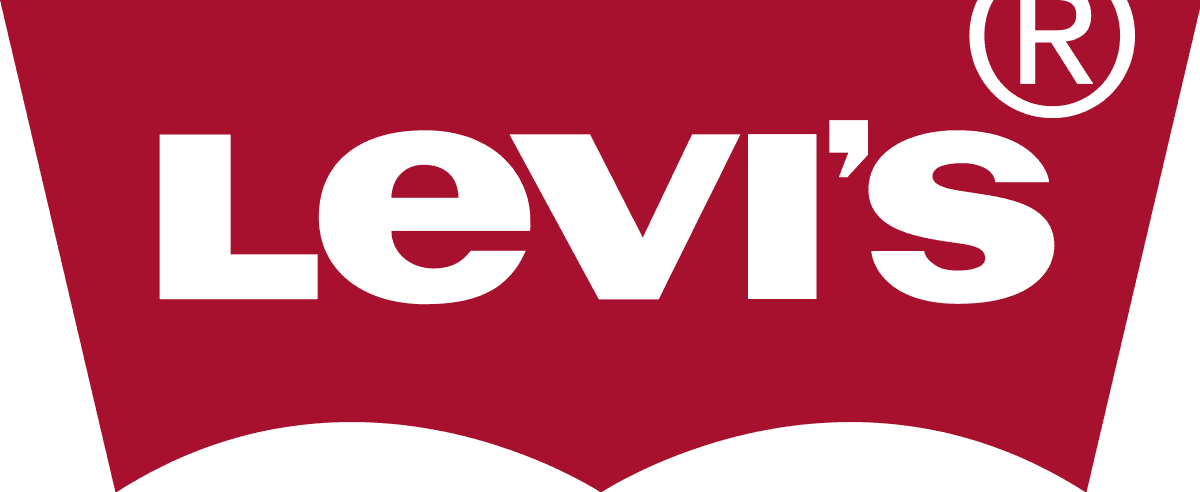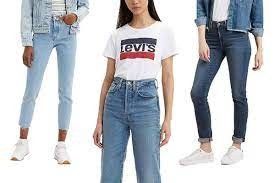
Updated on Aug 9, 2025
Share on:
Levi Strauss & Co. is a renowned clothing business with four primary brands, Levi’s, Signature, Denizen and Dockers. The Levi jeans are its most popular brand and among a young age have established a cult. The company is based in San Francisco, United States.
We need to comprehend the SWOT Analysis of Levis as it is a necessity for every organization to survive and thrive in the market to understand better the causes of its constant growth. Also, please read our other Case Studies. We shall therefore learn about the SWOT Analysis of Levis in this case study. Let’s start
About Levis

The American textile firm Levi Strauss & Co is world-famous for Levi’s denim brand. In May 1853, German immigrant Levi Strauss traveled from Buttenheim, Bavaria, to San Francisco, California, to build a branch of New York’s dry commodities enterprise on the west coast. While Delaware is registered in the firm, Levi’s Plaza in San Francisco is the headquarters of the company.
Included in Levi’s are four brands of subcategories: Levi, Denizens, Signature, and Dockers. The brand is known for its outstanding quality and convenience of blue denim jeans, with top names. The brand saw a lot of ups and downs, yet it remained one of the world’s most outstanding beauty brands. Today, everybody is familiar with Levi’s buzz. This was a huge triumph for the brand in opting for such a sophisticated and ultracool marketing technique. Levi’s tracks any shift in retail behavior that is taking place.
SWOT Analysis of levis
A SWOT analysis analyses its competitors the strengths, weaknesses, opportunities, and threats of an enterprise. It is a wonderful tool to determine the thriving position of the corporation, the failure of it and how the company may expand. So, let’s see SWOT analyses from Levi.
1. Strengths of Levis
Strengths are unique traits of a firm that give them a competitive edge in gains of greater market share, client attraction, and profitability optimization. Some of the strengths of Levi’s are:
- The most well-known brand in the world with a solid name.
- Levi’s has an estimated 60 manufacturing units in the United States and more than 25 more factories exist worldwide. According to an estimate. The company’s supply chain strength is demonstrated by global facilities.
- For promoting its products and services Levi’s uses many marketing methods. Like TV advertising, throwback music, and marketing initiatives on social media. It has made the apparel company aware of and interacts with client trends.
- Levi’s has a solid distribution and supply chain. To reach customers the clothing company uses different outsourcing and distribution platforms. For example, the shopping centers are paired with the brand retail stores, internet, etc. The apparel brand might enter several markets.
- The marks under the leadership of Levi include Dockers, Denizen, Signature, Levi, and Levi Strauss & Co. All of them are well-known brands and help the corporation diversify its product range.
- Levi is the 580th largest brand in the world. The clothing company’s market value in 2021, however, was $9,559.8 million.
2. Weaknesses of Levis
The weaknesses of a firm or brand have to be improved. Therefore, let’s see some of the greatest problems in Levi’s:
- Levi Strauss relies heavily on its ten biggest wholesalers, who account for almost 31% of its net sales. Any violation of those promises could affect the financial status of Levi Strauss.
- Approximately 97% of Levi Strauss’ products are produced by independent product producers. These producers can be located in 30 different nations. By relying on independent manufacturers, the business risk of Levi Strauss is raised.
- In the past, Levi Strauss had experienced product duplicity, a detrimental impact on the image and sales of the company. As a result, the company of Lev Strauss was impacted.

3. Opportunities for Levis
Opportunities are places where a business could focus on improving performance, sales, and, ultimately, profit. Let’s look at the kinds of chances Levi’s has to get excellent results.
- Although slowly, there was a steady increase in the US clothing market. In one of its main markets, which makes up over 24% of its global sales, Levi Strauß is constantly growing.
- The clothing market is likely to profit from a possible growth in brand clothes demand, thanks to increased per capita income and improving people’s lifestyles in emerging countries.
- Living in the field of internet shopping, Levi Strauss has four brand-dedicated websites that it operates through different online platforms. Levi Strauss can use its brand equity to cover demand with expansion in online retail.
.
4. Threats to Levis
Environmental elements that might prevent the expansion of a corporation are threats. There are a few threats from Levi:
- Levi Strauss, which is a global brand in the clothing sector, confronts strong competition from numerous other global and local brands. The company must be updated and innovative to stay on top of the competition with ever-changing trends in fashion.
- Labor costs have increased worldwide, hence increasing the company’s production costs. This has an impact on the company’s price structure and sales.
- It was exceedingly difficult for a new brand to join the market before the creation of the e-commerce world. But new brands have a wonderful platform to fight with Levi’s like in the E-commerce business worldwide.
With this, we come to the end of the SWOT Analysis of Levis. Let’s conclude this case study in the section below.


Learn Digital Marketing for FREE


Conclusion
The early success of Levi Strauss & Company was due to its monopolized behavior. The riveted enterprise was patented by the corporation for riveted jeans, improves strength, jeans, improving durability, and becomes more famous. The company has maintained earnings over the years through a wide range of products, new markets, and market share growth. Via separating its product from general jeans, the corporation erected obstacles in the entry by patents and markings. As more companies became market participants, however, the corporation began to lose customers and to lose. Niche market shares of Levi’s enormous dominance were captured.
The company’s SWOT analysis helped develop critical recommendations such as a new vision and a new strategy as well as adherence to current performance criteria.
Was that informative for you? Would you like additional information? For detailed analysis, see the Wisdom Portal on our website. Moreover, Karan Shah’s Free Masterclass, the founder and CEO of IIDE, is a good place to start when interested in digital marketing.
In the comments box below you should express your thoughts on this case study. Thank you for taking your time to read and please share it with your families and friends, if you found it interesting.
Want to Know Why 2,50,000+ Students Trust Us?
Dive into the numbers that make us the #1 choice for career success

MBA - Level
Post Graduate in Digital Marketing & Strategy
Best For
Fresh Graduates
Mode of Learning
On Campus (Mumbai & Delhi)
Starts from
Jan 5, 2026
Duration
11 Months
Live & Online
Advanced Online Digital Marketing Course
Best For
Working Professionals
Mode of Learning
Online
Starts from
Dec 19, 2025
Duration
4-6 Months

Online
Professional Certification in AI Strategy
Best For
AI Enthusiasts
Mode of Learning
Online
Duration
5 Months

Offline
Undergraduate Program in Digital Business & Entrepreneurship
Best For
12th Passouts
Mode of Learning
On Campus (Mumbai)
Duration
3 Years
Recent Post
Aditya Shastri leads the Business Development segment at IIDE and is a seasoned Content Marketing expert. With over a decade of experience, Aditya has trained more than 20,000 students and professionals in digital marketing, collaborating with prestigious institutions and corporations such as Jet Airways, Godrej Professionals, Pfizer, Mahindra Group, Publicis Worldwide, and many others. His ability to simplify complex marketing concepts, combined with his engaging teaching style, has earned him widespread admiration from students and professionals alike.
Aditya has spearheaded IIDE’s B2B growth, forging partnerships with over 40 higher education institutions across India to upskill students in digital marketing and business skills. As a visiting faculty member at top institutions like IIT Bhilai, Mithibai College, Amity University, and SRCC, he continues to influence the next generation of marketers.
Apart from his marketing expertise, Aditya is also a spiritual speaker, often traveling internationally to share insights on spirituality. His unique blend of digital marketing proficiency and spiritual wisdom makes him a highly respected figure in both fields.